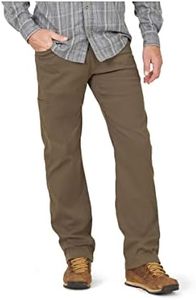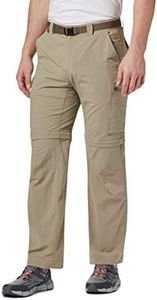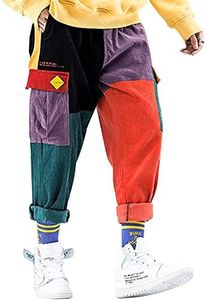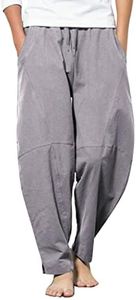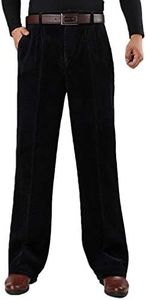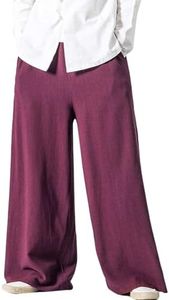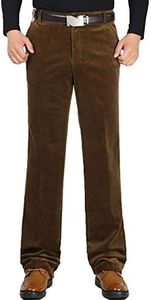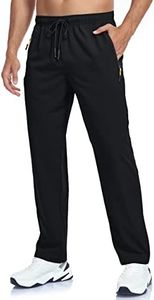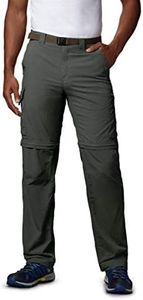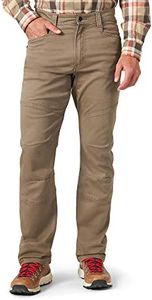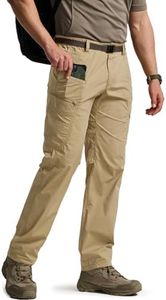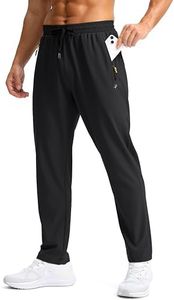10 Best Hiking Pants For Men 2025 in the United States
Our technology thoroughly searches through the online shopping world, reviewing hundreds of sites. We then process and analyze this information, updating in real-time to bring you the latest top-rated products. This way, you always get the best and most current options available.

Our Top Picks
Winner
ATG by Wrangler Men's Synthetic Utility Pant, morel, 36W x 34L
Most important from
9707 reviews
The ATG by Wrangler Men's Synthetic Utility Pant is a solid choice for hikers needing durable and functional pants. Made from 96% nylon and 4% spandex, these pants offer a good balance of durability and stretch, making them comfortable for long hikes. The quick-drying feature is particularly beneficial for those who might encounter wet conditions, as the water-repellent finish helps keep you dry.
Additionally, the pants include UPF 30 protection, which is a nice added safety feature for sun-exposed trails. The gusseted crotch enhances mobility, allowing for a full range of motion, which is crucial for hiking and climbing activities. The reinforced kickplate further adds to the durability, ensuring that these pants can withstand rough terrains and frequent use. Secure storage is provided by a zip utility pocket, helpful for keeping smaller items and electronics safe.
On the downside, these pants do not feature convertible options, which might be a drawback for those who prefer the versatility of converting pants to shorts. Also, while the pants are breathable, the nylon fabric may still feel a bit warm in extremely hot conditions. With a regular fit in the seat and thigh, they offer comfort but may not suit those preferring a more tailored or loose fit. Considering these aspects, the ATG by Wrangler Men's Synthetic Utility Pant is suited for hikers who value durability, quick-drying capability, and secure storage.
Most important from
9707 reviews
Eddie Bauer Men's Athletic Fit Rainier Pants, Dark Smoke, 38W x 32L
Most important from
591 reviews
The Eddie Bauer Men's Athletic Fit Rainier Pants are a solid option for hiking enthusiasts. Made from a blend of 94% Nylon and 6% Spandex, these pants offer both durability and flexibility. The material is bluesign certified, meaning it meets high standards for safety and sustainability. The StormRepel DWR finish provides water resistance, making them suitable for wet conditions, while the FreeShade UPF 50+ offers excellent sun protection.
The articulated knees enhance mobility, which is great for active use on rugged trails. With a close-to-body athletic fit, they manage to balance comfort and performance without restricting movement. The pants come with standard closure options, including a button and zipper, and are easy to care for with machine washability.
These pants are well-suited for hikers who prioritize performance and environmental sustainability but might not be the best choice for those needing extensive storage or convertible options.
Most important from
591 reviews
CQR Men's Flex Ripstop Tactical Pants, Water Resistant Stretch Cargo Pants, Lightweight EDC Hiking Work Pants, Dura Flex Charcoal, 32W x 32L
Most important from
9316 reviews
The CQR Men's Flex Ripstop Tactical Pants are a versatile choice for those involved in outdoor activities like hiking, camping, and even more demanding tasks such as military training. Made from a blend of polyester, cotton, and spandex, these pants offer durability while allowing for flexibility and mobility. The elastic waistband provides a secure fit, which is essential for active movement. They are water and stain-resistant, making them suitable for various weather conditions and environments. However, while they are water-resistant, they might not be fully waterproof, which could be a drawback in extremely wet conditions.
The pants excel in functionality with 8 multi-purpose pockets that can carry various tools and equipment, which is particularly useful in tactical settings. On the downside, they don't offer convertible options, so if you're looking for pants that can switch to shorts, these might not be ideal. At just 3.2 ounces, they are lightweight, adding to their comfort and practicality during long hikes or sports activities.
In essence, these pants are well-suited for outdoor enthusiasts and professionals who need durable, functional, and comfortable gear.
Most important from
9316 reviews
Buying Guide for the Best Hiking Pants For Men
Choosing the right hiking pants is crucial for a comfortable and enjoyable hiking experience. The right pair of pants can protect you from the elements, provide comfort, and enhance your mobility. When selecting hiking pants, consider the environment you'll be hiking in, the weather conditions, and your personal preferences for fit and functionality. Here are some key specifications to consider when choosing hiking pants for men.FAQ
Most Popular Categories Right Now
